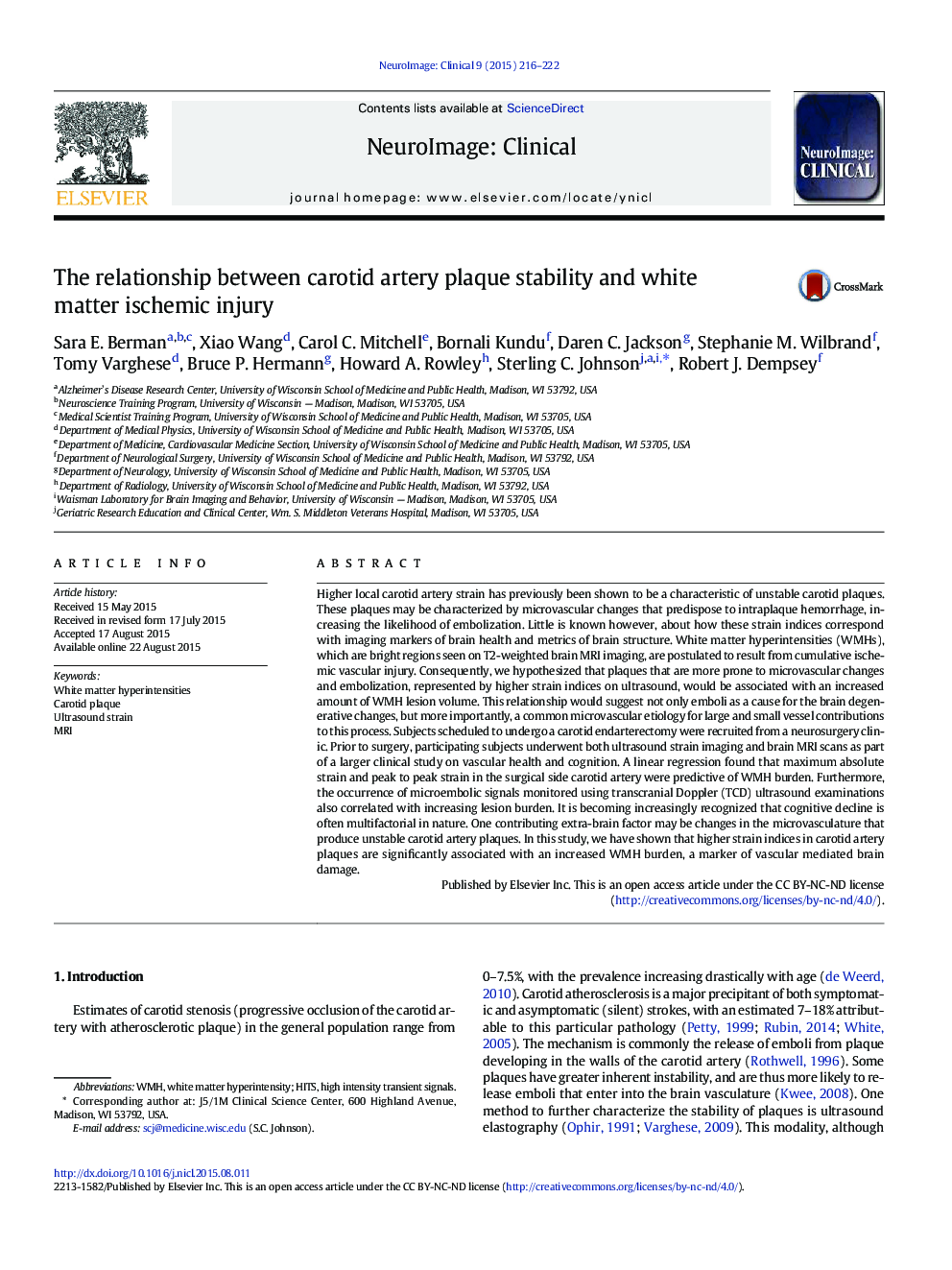| کد مقاله | کد نشریه | سال انتشار | مقاله انگلیسی | نسخه تمام متن |
|---|---|---|---|---|
| 3075170 | 1580958 | 2015 | 7 صفحه PDF | دانلود رایگان |
• We examine how carotid artery plaque strain indices correspond with MRI metrics.
• Strain in the ICA predicts increased white matter hyperintensity lesion burden.
• Subjects with embolizing plaques have greater white matter lesion burden.
Higher local carotid artery strain has previously been shown to be a characteristic of unstable carotid plaques. These plaques may be characterized by microvascular changes that predispose to intraplaque hemorrhage, increasing the likelihood of embolization. Little is known however, about how these strain indices correspond with imaging markers of brain health and metrics of brain structure. White matter hyperintensities (WMHs), which are bright regions seen on T2-weighted brain MRI imaging, are postulated to result from cumulative ischemic vascular injury. Consequently, we hypothesized that plaques that are more prone to microvascular changes and embolization, represented by higher strain indices on ultrasound, would be associated with an increased amount of WMH lesion volume. This relationship would suggest not only emboli as a cause for the brain degenerative changes, but more importantly, a common microvascular etiology for large and small vessel contributions to this process. Subjects scheduled to undergo a carotid endarterectomy were recruited from a neurosurgery clinic. Prior to surgery, participating subjects underwent both ultrasound strain imaging and brain MRI scans as part of a larger clinical study on vascular health and cognition. A linear regression found that maximum absolute strain and peak to peak strain in the surgical side carotid artery were predictive of WMH burden. Furthermore, the occurrence of microembolic signals monitored using transcranial Doppler (TCD) ultrasound examinations also correlated with increasing lesion burden. It is becoming increasingly recognized that cognitive decline is often multifactorial in nature. One contributing extra-brain factor may be changes in the microvasculature that produce unstable carotid artery plaques. In this study, we have shown that higher strain indices in carotid artery plaques are significantly associated with an increased WMH burden, a marker of vascular mediated brain damage.
Figure optionsDownload as PowerPoint slide
Journal: NeuroImage: Clinical - Volume 9, 2015, Pages 216–222
